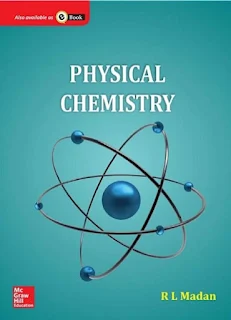 |
| Physical Chemistry by R L Madan |
DESCRIPTION:
1. Thermodynamics:
- Energy and Enthalpy:
Understanding the concepts of internal energy, heat, and work done in a
system.
- Entropy: The measure of
system disorder or randomness.
- Gibbs Free Energy: A
thermodynamic potential that measures the maximum reversible work that may
be performed by a system at constant temperature and pressure.
2. Quantum
Mechanics:
- Wave-Particle Duality:
The idea that particles, like electrons, can exhibit both wave and
particle properties.
- Schrödinger Equation:
Describes how the quantum state of a physical system changes over time.
- Quantum Numbers:
Describing the quantum state of an electron in an atom.
3. Chemical
Kinetics:
- Reaction Rates:
The speed at which a chemical reaction takes place.
- Mechanisms:
The step-by-step sequence of reactions by which the overall chemical
change occurs.
- Catalysis:
The increase in the rate of a chemical reaction due to the participation
of an additional substance called a catalyst.
4. Quantum
Chemistry:
- Molecular Orbital Theory:
Describes the electronic structure of molecules in terms of molecular
orbitals.
- Electronic Structure: Understanding
how electrons are arranged in atoms and molecules.
- Spectroscopy:
Techniques to study the interaction between matter and electromagnetic
radiation.
5. Statistical
Mechanics:
- Statistical Distributions:
Applying statistical methods to understand the behavior of a large number
of particles in a system.
- Partition Functions:
Describing the statistical distribution of energy levels in a system.
- Applications to Thermodynamics:
Linking statistical behavior to macroscopic thermodynamic properties.
6. Electrochemistry:
- Redox Reactions:
Involving the transfer of electrons between chemical species.
- Nernst Equation:
Relates the concentration of reactants and products to the cell potential
in electrochemical cells.
- Electrochemical Cells:
Devices that convert chemical energy into electrical energy.
7. Solid
State Chemistry:
- Crystal Structures:
The arrangement of atoms or molecules in a crystalline material.
- Band Theory: Explains
the properties of conductors, insulators, and semiconductors based on the
arrangement of energy bands.
- Electrical and Magnetic Properties:
Understanding how solids conduct electricity and respond to magnetic
fields.
8. Molecular
Spectroscopy:
- Spectroscopic Techniques:
Methods to study the interaction between matter and electromagnetic
radiation.
- Molecular Vibrations and Rotations:
How molecules vibrate and rotate in response to absorbed or emitted light.
9. Surface
Chemistry:
- Adsorption:
The process by which molecules adhere to the surface of a solid or liquid
material.
- Catalysis at Surfaces:
Understanding how surfaces can enhance or inhibit chemical reactions.
- Colloids:
Suspensions of particles in a liquid medium.
10. Experimental
Techniques:
- Common Laboratory Techniques:
Including methods for measuring temperature, pressure, and concentrations,
as well as spectroscopic and electrochemical techniques.
Tags:
Chemsitry
